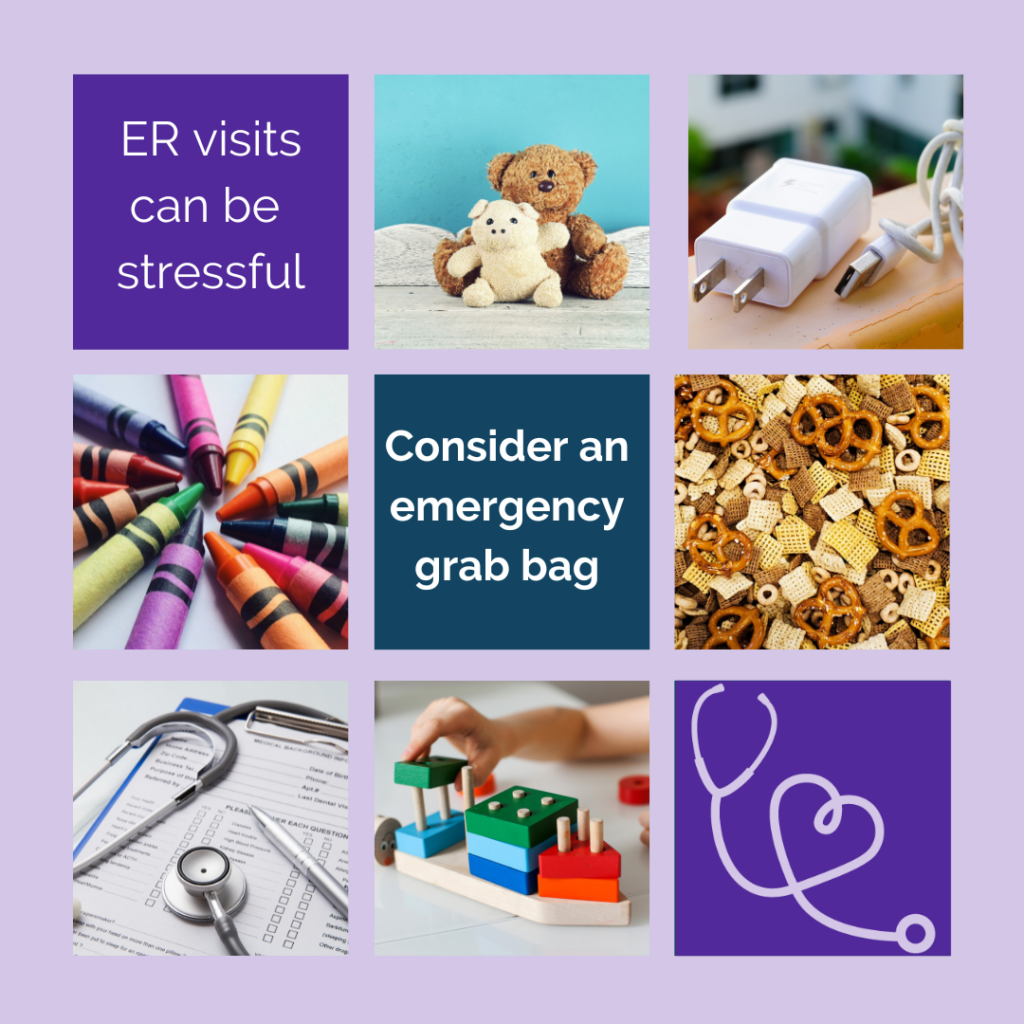Emergency room visits are not something typically planned for. It can be an extremely stressful event for both the parents and the child. Consider having an emergency grab bag on hand to reduce the risk of forgetting anything vital and help the visit go a little more smoothly. Here are five things to include.

1. Documentation
Prior to treating a child, providers need to know two things in order to quickly assess and safely treat the patient: the reason for the child’s visit and their past medical history. A comprehensive medical history list in the grab bag will alleviate trying to find all the documentation on a phone or remembering details during this stressful event. This list should include vaccinations, current medications, known allergies, and past medical diagnoses and/or surgeries
Keep this document up to date by asking for a summary from check-ups at the pediatrician’s office. A visit summary usually includes current height, weight, known allergies, treatments, a brief medical history, vaccinations, and a summary of the visit. After every check-up put the updated visit summary in the emergency grab bag and shred the old one. This way the document is always up to date.
2. Chargers
Wait times in the emergency room can be long, so make sure to include device chargers. This ensures that caregivers can keep in contact with other family members, and provides a quick distraction tool to help keep the child calm and/or engaged, if needed.
3. Distraction items
Emergency rooms can be straining for anyone. This is especially true for children who do not always understand why they are stuck in an unfamiliar environment that may not have anything to do, like activities or games. Tossing some crayons, markers, or small games into the emergency grab bag can provide some diversion and fun for a child, and help them cope with a challenging event.
4. Snacks and/or Cash
Being hungry in an emergency room is another potential stressor. Not all emergency rooms have food available, so having snacks for both the parent and the child (and/or cash for vending machines) in the emergency grab bag may be helpful. It is important to always ask a provider PRIOR to feeding a patient.
5. Comfort Items
Emergency room visits can be painful and scary for a child. Bringing comfort items and toys can help relieve some stress for the pediatric patient, but don’t bring their all-time favorite stuff, just in case it gets misplaced or soiled. Depending on the age of the patient these items could include a stress ball, blanket, or stuffed animal. Consider allowing the child to choose an item to bring, along with thoughtful items chosen by the caregiver.
Did you find this article helpful? Do you have an experience or other suggestions to share?
